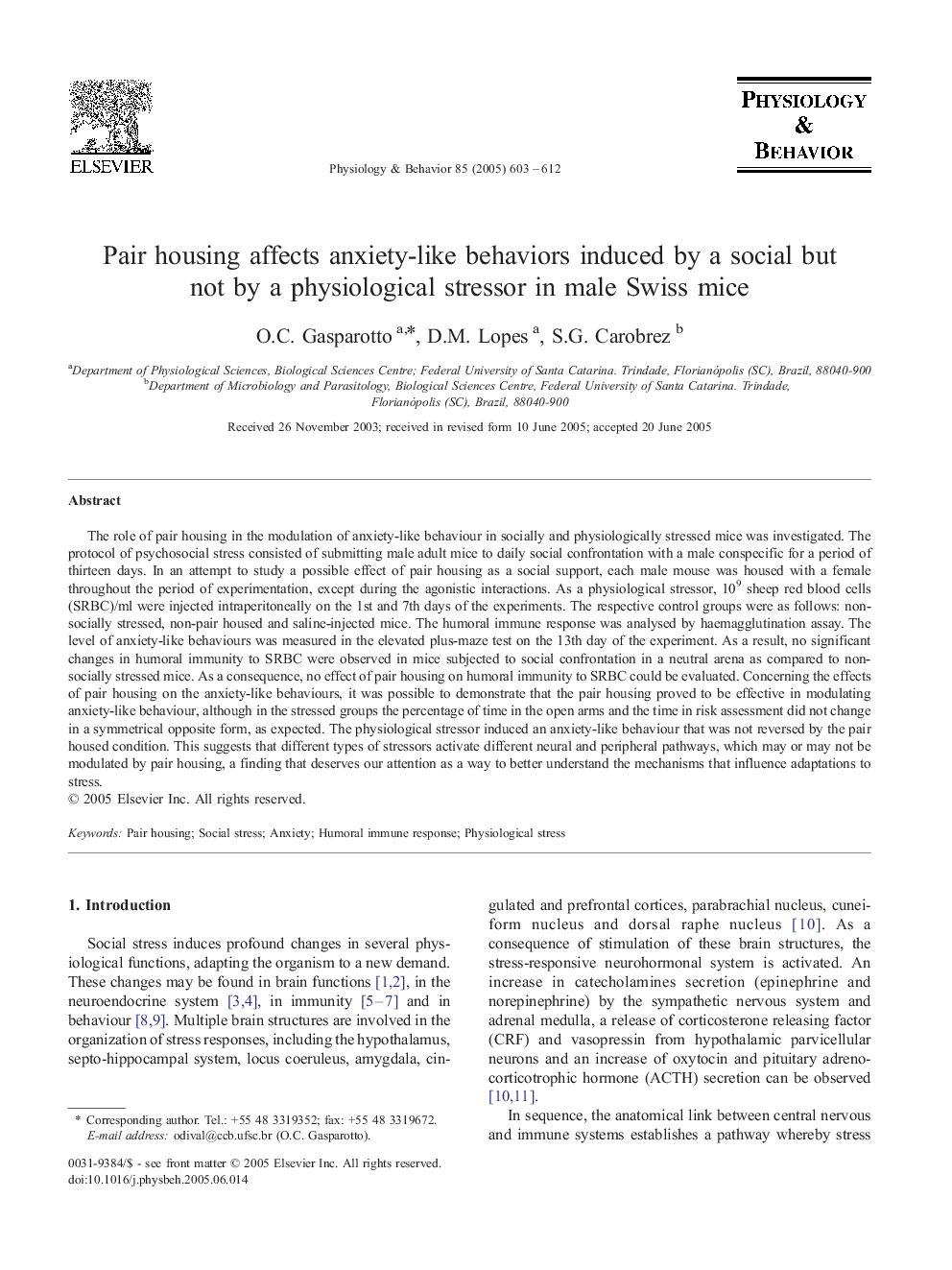| Article ID | Journal | Published Year | Pages | File Type |
|---|---|---|---|---|
| 9149650 | Physiology & Behavior | 2005 | 10 Pages |
Abstract
The role of pair housing in the modulation of anxiety-like behaviour in socially and physiologically stressed mice was investigated. The protocol of psychosocial stress consisted of submitting male adult mice to daily social confrontation with a male conspecific for a period of thirteen days. In an attempt to study a possible effect of pair housing as a social support, each male mouse was housed with a female throughout the period of experimentation, except during the agonistic interactions. As a physiological stressor, 109 sheep red blood cells (SRBC)/ml were injected intraperitoneally on the 1st and 7th days of the experiments. The respective control groups were as follows: non-socially stressed, non-pair housed and saline-injected mice. The humoral immune response was analysed by haemagglutination assay. The level of anxiety-like behaviours was measured in the elevated plus-maze test on the 13th day of the experiment. As a result, no significant changes in humoral immunity to SRBC were observed in mice subjected to social confrontation in a neutral arena as compared to non-socially stressed mice. As a consequence, no effect of pair housing on humoral immunity to SRBC could be evaluated. Concerning the effects of pair housing on the anxiety-like behaviours, it was possible to demonstrate that the pair housing proved to be effective in modulating anxiety-like behaviour, although in the stressed groups the percentage of time in the open arms and the time in risk assessment did not change in a symmetrical opposite form, as expected. The physiological stressor induced an anxiety-like behaviour that was not reversed by the pair housed condition. This suggests that different types of stressors activate different neural and peripheral pathways, which may or may not be modulated by pair housing, a finding that deserves our attention as a way to better understand the mechanisms that influence adaptations to stress.
Related Topics
Life Sciences
Biochemistry, Genetics and Molecular Biology
Physiology
Authors
O.C. Gasparotto, D.M. Lopes, S.G. Carobrez,
